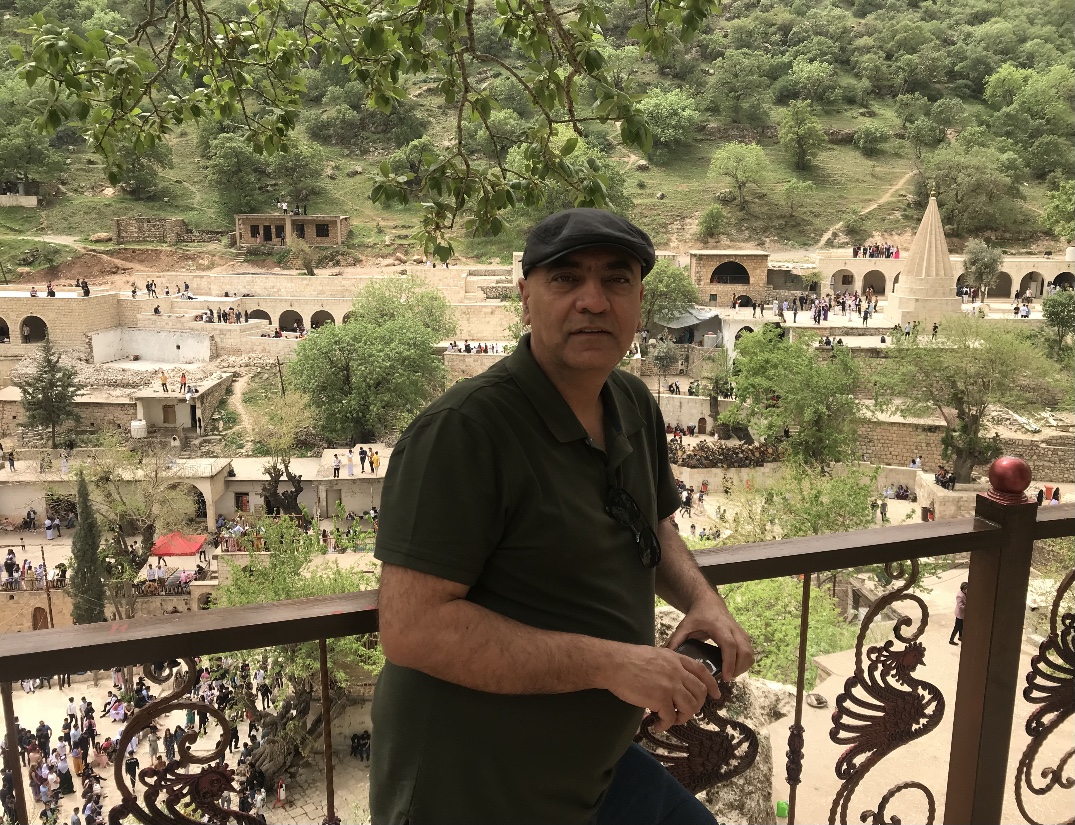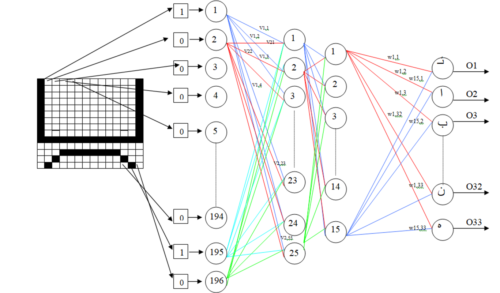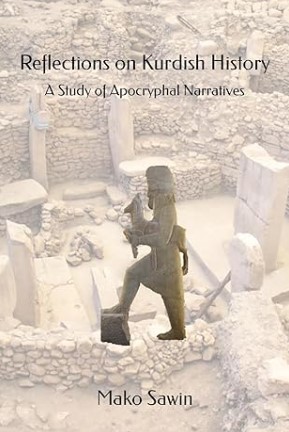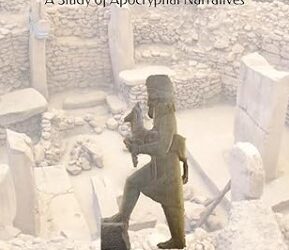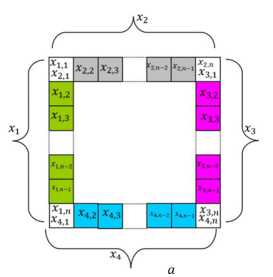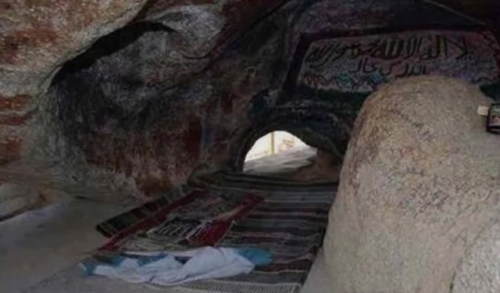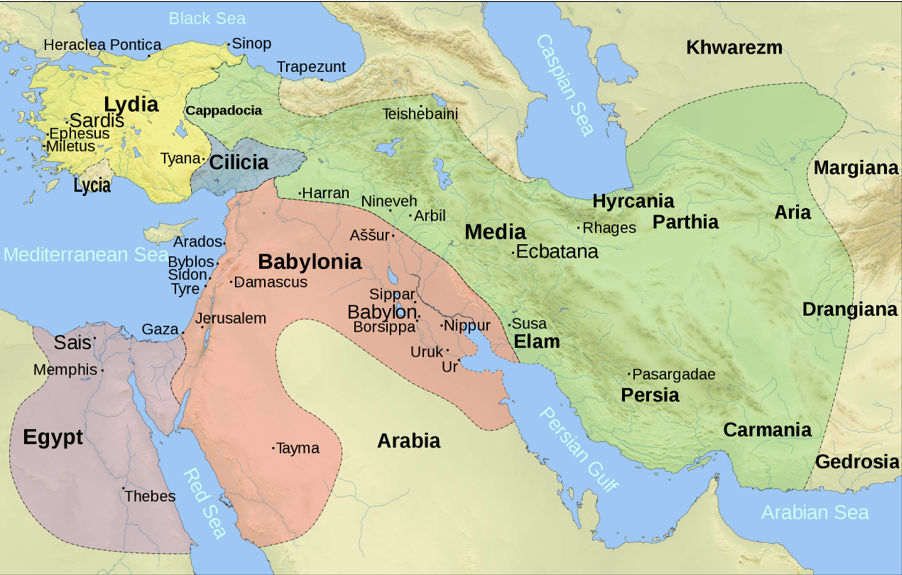Introduction
The present paper assesses the most important prospect of Islam, stressing on the concept of Waḥy, known as revelation. The revelation of Prophet Muḥammad is a very broad subject that covers many aspects of the life of the Prophet, Sharīʿa and the themes of Qur’ān. Therefore, the essay attempts to concentrate on few aspects of revelation. The present paper discusses the meaning and the concept of the Waḥy according to the Arabic language and Qur’ānic interpretation. The meaning may change according to the sources and context. The discussion of Waḥy and the early concepts explains its actual meaning in Islam and how Muslim scholars use it in Qur’ānic interpretations.
According to the Islamic sources, Prophet Muḥammad received Waḥy for the first time while he was asleep in the cave while his prophecy began in Mecca. The prophecy of Prophet Muḥammad comprised twenty-three years split into two eras, 13 years in Mecca then he migrated to Medina lived for ten years.
The paper explores the reasons behind changing of the revelation of Prophet. It further explains the differences in the verses revealed in Mecca as they were short and in Medina that including long verses. The differences help in understanding the factors that contributed to these changes as the verses transformed from short to long versions.
The paper further uncovers different types of Waḥy revealed to Prophet Muḥammad and analysis of the reactions on receiving it. The common types of Waḥy identified in the paper include quick and delayed Waḥy. The paper illustrates the conditions contributing to quick Waḥy that involved immediate responses to events. The delayed Waḥy involved a slow response and was time-consuming.
The paper also searches the concept of Waḥy and its relevance to prophecy. It attempts to find the answer to the question; if any family member of Muḥammad received Waḥy or not? It also searches which family members received Waḥy? The paper also finds the meaning of Waḥy and the exact time when it was revealed to the Prophet?
The essay focuses on the scholars’ debates and assessment of different viewpoints. The analysis helps in determining which verses Muḥammad revealed through Waḥy. The paper further explores the sender of the Waḥy as the people doubted if Muḥammad received it from God or Satan. Different Qur’ānic verses permit the reader to identify the reality of the sender.
The sources used in the paper include The Qur’ān, Ḥadīths, exegesis, a biography of Prophet, and asbāb al-nuzūl.
Keywords: Waḥy, Qur’ān, Hadiths, asbāb al-nuzūl.
Literal and technical meaning of Waḥy
There are different interpretations of the concept of Waḥy. According to the Arabic dictionary al-Munjid [22, p.891], the word Waḥy has many meanings, and it changes according to its use in different contexts. For instance, ‘Waḥya ilā (to) flān (person)’, means refer to this person or send a messenger to this person. ‘Waḥya ileihi (to the person), au (or), Waḥya ileihi kalāman (the speech)’, means talking to this person in secret or telling them something that they must not repeat. ‘Waḥya Allāhu ilā qalbihi (his heart)’ means that Allah inspired this person, and ‘Waḥya al-kitāb (the book)’, means wrote it.
According to Lisān al-ʿArab [15, Vol. XV, pp. 379-382], the word Waḥy means sign, indication, writing, message, inspiring, and speaking in secret. If the word is used in the context of the decision, it depicts decision and settlement. Abū Isḥaq said that originally the word meant telling someone something in secret, and for that reason ‘Ilhām’ became ‘Waḥy’.
According to Mirzā Ghulām Aḥmad who distinguished ‘Waḥy’ Revelation to the ideas that arise in the human mind as a result of thinking. He said revelation is the powerful converse of God with his chosen servant whom he appoints for conveying knowledge to the world [14, p.201]. In other words, Waḥy is only a divine message from God to His messenger. He added that those inspirations that cause humans to write poems or other writings are a result of the reflection of human thinking, and is not related to Waḥy.
Waḥy in the Qur’ān
The word Waḥy appears in the Qur’ān many times, while its meaning changes according to the context. For instance, verse 16:68, represents Waḥy as a message sends by when Allāh is instructing to bee to build a house in the mountains. In verse 19:11, when Zakariyyā Waḥy to them, means Zakariyyā indicated to them. While the word Waḥy in verse 5:111, means that Jesus was inspiring his Disciples.[15, pp.379-382]
Therefore, Waḥy has several meaning in Qur’ān, and the meaning is not limited to revelation. The most common interpretation learned by Muslins regarding Waḥy is; communication between Allāh and Prophet. The Qur’ān, in verse 28:7, emphasis on the Waḥy sent to mother of Moses to suckle Moses, and then if she has fear about him, throw him into the river.[15] Al-Ṭabarī, one of the great exegete, has referred to Qatāda for assessing the meaning of the Waḥy in verse 28:7. Qatāda states, Waḥy was a revelation from Allāh to her, the revelation threw into her heart, but it was not the revelation of the prophecy.[9, Vol. IX, pp.116-7][1]
From Qatada’s viewpoint, we understand that Waḥy holds different meanings for the proper and normal people. The later sections of the paper discuss the differences in the two concepts.
Modes of Waḥy, Revelations
The Islamic sources confirm various kinds of the Waḥy were revealed to Prophet Muḥammad. Rafiq Aḥmad in his book of Translation and commentary Ra’fatul Bari: Sharaḥ Saḥiḥ al-Bukhārī, refers to all kinds of Waḥy [28, pp.155-9]:
First: Waḥy al-Matlū; the words of Allāh which are recited to the Prophet Muḥammad are exists in the Qur’ān.
Second: Waḥy Gaīr al-Matlū; the words which are recited to the Prophet Muḥammad but do not exist in Qur’ān.
Rafiq Aḥmad added, through three different ways Holy Prophet received revelation:[28, p.156]
First: Direct speech between Allāh and Prophet without any intermediary.
Second: Indirect speech between Allāh and Prophet through angels. The angel transformed to the human version when carried God’s message to proper or Prophet heard the voice of an angel.
Third: Waḥy was revealed through Prophet’s heart or dream. Qur’ān at many places identifies transmission of Allāh’s message through the dream. As for Qur’ān states, when Joseph saw a dream, and that dream was the revelation to him.
According to the Ḥadīth Muṭṭa Malik [23, 15:7], al-Bukhārī [5, 46:2] And Jami al-Tirmidhi [24, 46:3634]; when Prophet Muḥammad was asked how he received the revelation he replied: “it was revealed in the form of the ringing bell while the state passed off only when I grasped the inspiration. Angel appeared in human form, and I grasped the message shared by him. ʿĀʾisha added: Verily I saw the Prophet being inspired divinely on a very cold day and noticed the sweat dropping from his forehead (as the Inspiration was over).”
The same Ḥadīth was narrated differently by al-Bukhārī [5, 59:28], Sahih al-Muslim [26, 43:117] and an-Nasa’i [20, 11.934][2], however, the part of ʿĀʾisha is missing in those sources. The interpretation of different sources depicts that the three common methods used for revelation included the ringing of bell, voice or the angel in the form of human visiting the Prophet.
The process of receiving Waḥy was not a simple process as apparent in the Ḥadīth of ʿĀʾisha explaining how sweat poured from the forehead of proper after his communication with God. Ibn Kathīr [16, vol. II, p.237][3] Also explain the process in his exegesis ‘Tafsīr’ as he highlights conditions of Prophet after the revelation of verse 4:95. He illustrates that the body of Prophet Muḥammad became heavy after the revelation of Holy war ‘Jihad.’ The concept of Waḥy is also visible in the revelation of present verse, as it explained to Prophet about believers who deny participating in Jihad are not like those believers who participating. After conveying the message of Allāh to the people, Umm Maktūm, a blind man agreed to participate in Jihad but he was unable due to his disability. After the speech of this man, Allāh sent revelation and modified the verse. Zayd b. Thābit explains that Prophet Muḥammad put his thigh on mine, and it became so heavy that I feared the power would break my thigh.
Ḥadīths identified and the exegesis of verse 4:95, makes it clear that with the revelation that sweat and heaviness of body were two prominent signs of revelation. The analysis of different conditions depicts that God used three ways of sending Waḥy to the Prophet. The method of direct inspiration did not involve a messenger. Verse (42:51) confirms the direct communication between Allāh and Prophet. Their method did not use angel as a medium to transmit the message. Direct inspiration occurred in full consciousness and sleep. The voice that Prophet heard in different forms also reflects direct communication between Allāh and the Prophet. The second method of sending Waḥy was through angels who played the role of messengers. The third method as ʿĀʾisha narrates that Holy Prophet received Waḥy in the form of true dreams.
Is Prophet the first one in his family receiving Waḥy?
The in-depth study of the concept of the Waḥy reveals that the Prophet was not the first one in his family who received the Waḥy. Although the biography of the Prophet and the Qur’ānic source has never mentioned that the Prophet was born in a prophecy family, whereas by reading the biography deeper, it shows, indeed the Prophet was born in a family of the prophecy. According to A. Guillaume [1, p.45] And Ibn Kathīr [18, Vol. I, p.120],ʿAbd al-Muṭṭalib the grandfather of Prophet Muḥammad heard a voice in sleep that ordered him to dig a Zamzam. It is obvious; the spring of Zamzam is one of the sacred water by the Muslims, still running in the Holy place Mecca. The voice that ʿAbd al-Muṭṭalib heard in dream exhibits the same concept of Waḥy that Holy Prophet received later in life. The divine voice conveyed the message to ʿAbd al-Muṭṭalib regarding digging of the well.
The second sign of Waḥy is visible in the vows that he takes to sacrifice one of his sons to God. ʿAbd al-Muṭṭalib vowed that if he had ten sons, he would sacrifice one. When his sons grew, he told them about his vow and to keep God’s faith. His act was like Abraham (Ibrāḥīm al-Khalīl) when he tried to sacrifice one of his sons. He went to Kaʿba with his sons and wrote their names on ten arrows to cast lots. These arrows were put in vast then shacked; if any arrow has come out then this son will be sacrificed. From the first shack the arrow of ʿAbdullāh, father of Prophet come out. But the people of Mecca asked ʿAbd al-Muṭṭalib to slay ten camels instead of his son. This process was repeated nine times, for each time the arrow of ʿAbdullāh came out, and then people again asked his father to slay ten camels. As a result of the cast lots, 100 camels were sacrificed instead of ʿAbdullāh.[1, pp.68-9]
The thought to scarify one of his sons was the result of Waḥy. Pre-Islamic the history does not provide evidence of customs that slays sons. This only occurred when Abraham was asked to slay his son for pleasing God. Was this the Waḥy which exactly came to Abraham? Or was it an indication that to save ʿAbdullāh for preserving the prophecy for his son, Muḥammad?
The Islamic history justifies the connection of sacrifice with Waḥy revelation. After making a sacrifice of hundred camels, ʿAbd al-Muṭṭalib took his son ʿAbdullāh to the house of Waḥb b. Faḥr to marry his daughter Amīna to his son. On the way, a woman called Umm Qatt, sister of Warraq’s son Nawfal, asked him to marry her but he refused. ʿAbdullāh saw the same woman, and told him to propose again, she said the light on your forehead has gone, and I am no more willing to marry you. The sign of light was delivered to Amīna delivered to on birth of the Prophet. The sign of light depicts the future prophecy. [4, vol. I, p.132-3][10, pp.184–5][18, vol.I ,pp.127–8][1, p.68-9] The analysis of the events associated with the family members of Prophet depicts Waḥy existed at the time before Prophet’s birth. ʿAbdullāh had a revelation too as his mission was preserving the light and delivering to Amīna.
When Amīna, was carrying Prophet in her womb she heard a voice, “You are pregnant with the lord of this people and when he is born to say: I put him in the care of the One from the evil of every envier; then call him Muḥammad” [1, p.69]. The source does not identify if she was sleeping or awake. According to the Ibn Saʿd, she was asleep when she heard the voice.[6, vol.I, p.78-9] The event reveals that the mother of Prophet Muḥammad had received Waḥy too.
According to Ibn Kathīr, when Prophet Muḥammad was born his grandfather took him to the Kaʿba to pray to Allāh. Then he recited the poem; “Praise is to God who gave me this fine, wonderful boy who already in the cradle leads all boys I entrust his safety to the pillared House (Kaʿba), until he becomes the epitome of young men, until I see him fully grown, I seek his protection from all who hate and form the envious and the unstable, From those with ambition but eyeless, until I see him highly eloquent, You are he who was named in Qur’ān, in books whose meaning are well established (Your name being) Ahmed, written upon the tongue”[18. vol. I, pp.148-9].
The poem raises certain questions; did ʿAbd al-Muṭṭalib believed in One God? How did he know that Prophet Muḥammad will lead people? How did he know the name of the Qur’ān? How did he predict that the name of Aḥmad will be written in the Qur’ān? This historical evidence shows that the family of Prophet had received the revelation from the Allāh and all the revelations were in the form of voice or dreams.
Waḥy during the Childhood of Prophet
The Waḥy has indicated to Prophet Muḥammad since his childhood. According to the Saḥiḥ al-Muslim, Anas b. Mālik who states that Gabriel visited Prophet during his childhood. His chest was opened by Gabriel who took blood-clot away which was part of Satan. And then Prophet was laid in a golden basin, and he was washed with the water of Zamzam. Also, Anas added to that he saw the marks of needle on the breast of the Prophet Muḥammad.[26, 2:74]
There is another Ḥadīth which is similar to the previous one; it is quoted in many sources. It mentions that Abū Dharr al-Ghifārī inquired from Muḥammad; and said to Prophet when you realized that you became a Prophet of Allāh. Prophet replied to him that two angels came to him while he was in Mecca. One of the angels was on the Earth while other one stood between the Earth and the Sky. One of the angles asked another one to weigh me against one man; I was heavier than him. Several time I was weighed against one ten and then against hundred, I was heavier than them. Then the angel said if I weigh him against the entire men in the world then he will be heavier than them. The Prophet said I saw their scale was so light against mine.[10, Vol. II, pp.220–1] Both Ḥadīths shows that the angels, when carried God’s message, took the shape of humans and visited Prophet in his childhood.
Waḥy before the Prophecy
Before the prophecy, the Waḥy was revealed to other people, including information about the arrival of the Prophet. History claims that Umar b. al-Khaṭṭāb heard the voice from inside the belly of calf saying; there is no Gods but Allāh. He said that before Islam we used to sacrifice a calf and expected to get some of it. He further mentions that when they were standing to receive their share, they heard a voice.[1, p.93][4, Vol. I, pp.169–70] The events show that the divine voice used to guide people before Islam as it declared at multiple times there is no gods but Allāh. It will be noticed that Prophet Muḥammad conveyed the same message to the people after receiving Waḥy.
Islamic scholar confirms the prevalence of revelation before prophecy apparent in the salute of trees and stones. The statement of Prophet Muḥammad also supports the claim that revelation existed before Islam as he mentions, I still recognize the stone in Mecca which always saluted me. Ibn Hishām in the same source states that when Muḥammad walked, a voice greeted him, but when he turned around, there was no one, only a stone, and a tree.[4, , Vol. I, 187–8][10, Vol. II, p.215] ][26, 43:1] Description of these events ensures the role of Waḥy before prophecy.
Another sign of Waḥy is apparent in the fact that two angels always accompanied Prophet Muḥammad. According to Maysara who was a slave of Khadīja, during his trade with Muḥammad from Caravan to the Levant, he saw two angels shading him. Thus, Khadīja told her cousin, Waraqa what she heard from her slave. Waraqa was Christian and studied the scriptures of scholars. Waraqa said if the story is true, then Muḥammad is a Prophet.[18, Vol. I, pp.193–4]
According to Ibn Kathīr in his book al-Bidāya wa-l-nihāya fī l-taʾrīkh, Waraqa said, if angels accompany Muḥammad than he is a Prophet. Gabriel and Michael are two angels that convey the message of Allāh and plough his heart [17, Vol. III, p.5]. The Ḥadīths and stories are shows the signs of the prophecy were apparent to Prophet Muḥammad prior to prophecy. However Gabriel did not disclose the information of prophecy to Muḥammad until Allāh ordered him.
First Revelation to Prophet
There is a debate among scholars regarding the verses revealed to the Prophet Muḥammad. According to ʿĀʾisha the first revelation to the Prophet was in the form of true dreams. She also mentioned that his dream was as true as bright daylight. [4, Vol.I, p.187] According to Ibn Hishām [4, pp.189-90] And al-Ṭabarī [10, Vol. II, p.2018], the men of Mecca have the custom to visit Cave Ḥirā one month in a year for taḥannuth, means self-justification. When they returned to Mecca, they did ṭawāf, that indicates walk around Kaʿba. Prophet said it was the month of Ramaḍan while Gabriel visited me; I was sleeping in the cave when he appeared and asked me to recite. Muḥammad told the angel that he was illiterate and unable to recite. Gabriel pressed me him so tight that Muḥammad thought he was about to die but at the same moment, he was asked to recite. When Muḥammad asked what to recite, Gabriel replied; “Recite in the name of your Lord who creates! He creates man form a clot of blood. Recite: and your Lord is the most Bountiful. He who reaches by the pen teaches man what he knows not (verses 96:1-5).” At this time Muḥammad was able to recite, and when he woke up, the words were imprinted in his heart.
Prophet Muḥammad received revelation his dream and when he woke up, went back to the Mecca. The actual event varies according to different narrators. Al-Bukhārī completing this story states that Prophet went back to Mecca and asked his wife, Khadīja, to cover him. And Prophet told Khadīja “I fear that something will happen to me”. The statement of Muḥammad reveals his confusion as he was unable to understand the Waḥy. Khadīja then went to see her cousin, Waraqa bin Nawfal. Khadīja told him what happens in the cave. Waraqa told Khadīja that Muḥammad had met the angel, Gabriel who was sent to Moses. And said if I will be alive I will support him, but after a few days, he died.[5, 1:2]
The description of the event varies in the narration of al-Ṭabarī who illustrates after he woke up, he tried to kill himself and fell himself in the mountain. Al-Ṭabarī tries to convey that the Prophet hated poet and madman. Also, he was afraid that Quraysh alleged him as a poet or a madman, for that reason he tried to save himself. Then Gabriel came and told Muḥammad, I am Gabriel, and you are the messenger of Allāh. Prophet said, when I faced up to the heaven I saw Gabriel in the shape of the man with his feet set on the horizon. Several times Prophet tried to turn himself, but Gabriel. Then Prophet went back to see Khadīja to tell her what happened to him. When Khadīja inquired Prophet where he had been, he said to her, either I am a poet or the madman. Then Khadīja said, you are the trustworthy and honest man, and God will never do anything wrong to you. Then al-Ṭabarī continues with the story which Ḥadīth al-Bukhārī, also explains and adds information that Prophet himself saw Waraqa and told him again what happened to him. Waraqa informed him that he saw Nāmūs who is Gabriel that was sent to Moses.[10, vol. VI, pp.71-3]
Another version of Al-Ṭabarī is narrated in different sources claiming that the first revelation that came to the Prophet was Sūrat al-Mudaththir. The story narrated by ʿAbdullāh al-Anṣari states, that the Prophet said that he was walking when he heard a voice from heaven, and as he looked up, he saw an angel approaching the cave of Ḥīra who was sitting on a throne between heaven and earth. He further explained that Muḥammad went to Khadīja in the state of fear and asked her to wrap him in a cloak when God revealed himself (verses 74:1-7). The verse advised Muḥammad to remain calm and patient.[10, pp.75-6] This story is stated in Saḥiḥ al-Bukhārī too, with slight changes.[5. 1:4]
The overall analysis of the early revelations received by the Prophet reveals that there are two main versions explaining how verses were revealed to the Prophet. Ibn Kathīr in his book, Stories of The Prophets, noted that the revelations of Sūrat Al-ʿAlaq and al-Muddathtthīr gave him the titles of Baheer (the giver of good tidings) and Nazeer (the warner)[19, p.384]. Regarding the verse 74:1-7 which was revealed to the Prophet, it allows the reader to interpret how they are related to the revelation. To sum up, if verses 94: 1-5 and verses 74: 1-7 were sent to the Prophet during the first revelation and in a very short time, then why were they not classified in one chapter?
Another question arises, are the scholars corrected addressed the first revelation to the Prophet. Because both set of the verses in these two chapters, al-Alaq and Mudaththir, is not mentioned that revelation sent to the Prophet!
In addition, the books of al-Suyūṭī [11, p.249] and al-Wāḥdī [3, p.331], place emphasis on verse 74:11corresponding to the event where Abū Jaḥl alleged that Muḥammad is either a poet or a madman. The story depicts, that when Walīd Ibn al-Mughīrah heard a few verses of the Qur’ān his heart softened to Islam. Abū Jaḥl said, “This is noting but magic, derived from of old.” The verses were then revealed to the Prophet. Here, it is noticed that this verse is not related to the previous verses.
The verse 74: 11 indicated an invitation to the people to embrace Islam, and the purpose of these revelations were to instruct Muḥammad to invite people to embrace Islam. According to Ibn Hishām,[4, vol. I, p.203] there were three years between the revelation and inviting the people of Mecca to embrace Islam. That means that verse 74:11 was revealed at least three years after the revelation. Which leads to other questions; were other verses revealed between the time of the revelation of verses 74:1-7 and 8-56? If yes, then it means, that some Surahs of the Qur’ān revealed incomplete verses while another Surah had revealed, complete ones. Sometimes later the incomplete Surah had been completed. In another words, Sūrat al- Mudaththir which consists of 56 verses was completed in at least in three years while other Surahs had revealed verses in the same period.
Testing the Waḥy: Is it from God or Satan
When the people learned about the Waḥy, they doubted if the message was transmitted by God or Satan. The wife of Prophet, Khadīja tried to affirm that what Prophet saw was from Allāh not from the Satan. She explained that Gabriel is the angel of God who carries Allāh’s message to Muḥammad. When Gabriel came to Prophet, he told Khadīja, he is coming. Then she said to Prophet, come and sit on my left thigh when Prophet followed; she said do you see him. Prophet said yes, then she said come, sit on my right thigh. He sat on her right thigh. Khadīja asked, do you see him, now? Prophet said, yes. Then she revealed her veil while the Prophet was on her lap, and said do you see him, Prophet said no. Then Khadīja said that is an angel, not a devil.[4, pp90-1] The description of Khadīja confirms that the angels bringing Waḥy to Muḥammad were angels because they disappeared when she removed her veil. Al-Ṭabarī stated in a bit different manner, instead Khadīja revealing her veil, she asked Prophet to come in between her body and her shift. Then Gabriel was gone.[4, vol. I, p 190-1][10, vol. VI, p.73]
Al-Ṭabarī and Ibn Hishām do not provide any information regarding Khadīja’s encounter with Muḥammad to test the angels. Because this test is three stages and each stage has only two possibilities: if the Prophet was on the left thigh of Khadīja and Gabriel disappeared then what Gabriel would be considered? Or, if Gabriel had been disappeared while the Prophet was on the right thigh of Khadīja? What is the point of sitting on the right or left of his wife’s thigh, why not revealing the veil would be the only the test whether the one is Gabriel or not?
The stories presented by historians are a bit confusing while there are certain verses in Qur’ān that affirmed that the Waḥy is coming from the God. According to the Ibn Kathīr [16 Vol. VII, p.290][4], that people from Mecca said that those verses came from Satan, then Allāh revealed the verse 26:221-2 says, “Shall I inform you, upon whom the Shayatin [Satan] descends? He descends on every lying, sinful person?”
There are also other verses confirm that the Satan was not approaching the Prophet.
Verses 14:22, 15:42, 16:99, 17:65, 34:21, and 37:30. Also the interpretation of verse 10:94 explains, God asked Muḥammad if you doubted the revelations then you can consider other Holy books (Turret and the Gospel). These books made predictions about the Waḥy and prophecy.
Al-Ṭabarī commented on this verse and the verse means: the name of Muḥammad was written in their books (Torah and Gospel), and if you (Muḥammad) are in doubt then ask them. [9, Vol. XII, pp.286-90][5] According to the interpretation of Tafsīr al-Jalālayn,[8, p.219] the verse means: If you are in doubt regarding the sender of Waḥy then consult people who reading the Torah then they will tell you truth.
Therefore, there are plenty of verses in the Qur’ān that confirms the Waḥy was revealed to Muḥammad as the divine gift from Allāh. The Qur’ānic interpretation provides valid justification of the sender of Waḥy.
Is Ḥadīth part of Waḥy?
According to the verse 53: 3-4 which states, “Nor does he speak of (his own) desire. It is only a revelation revealed.” This verse is indisputable by the many scholars that every single word which Prophet said was from Allāh. In other words, the Ḥadīth is part of the revelation justifying that the Ḥadīth and Qur’ān are inseparable, and both are primary sources for Muslims.
According to Ḥadīths were mentioned in Musnad Aḥmad [13, No. 6510] and Abū Dawud [12m 26.6]; ʿAbdullāh b. Masʿud said “I used to write everything which I heard from the Messenger of Allāh. I intended (by it) to memorise it. The Quraysh prohibited me saying: Do you write everything that you hear from him while the Messenger of Allah is a human being: he speaks in anger and pleasure? So I stopped writing, and mentioned it to the Messenger of Allah. He signalled with his finger to him mouth and said: Write, by Him in Whose hand my soul lies, only right comes out from it.”
This Ḥadīth provides strong evidence that all speech of Prophet remains part of the Waḥy.
Timings of Waḥy
According to the sources: the biography of Prophet, Hadiths and Asbāb al-nzūl ‘The cause of revelation’. Sometimes the revelation was revealed in a very short time. While at other times Muḥammad received delayed Waḥy. The concept of quick and delayed Waḥy explains the need and role of urgency. For instance, Allāh sent a quick Waḥy when a blind man was unable to participate in the Jihad. Allāh sent the verse by adding he is not alleged to participate in Jihad.
Another event depicted when the Sūrat Muʾminūn was revealed to Prophet, his clerk ʿAbdullāh b. Sariḥ wrote the verses who were a foster brother of ʿUthmān b. ʿAffān. When he reached the end of the 14th verse, his clerk said “Allāh is the best creator”. Then the Prophet paused for a few seconds, and the same phrase was revealed to him.[2, vol. IV, pp.442-4] These two events show Allāh sent the message as quick responses to the events.
Whereas, al-Suyūṭī [11, p.258-60] and al-Wāḥdī [3, p.338-339] Identifies delayed revelations. They recognize Surah al-Ḍūḥā as a delayed revelation. It explains that a woman called Umm Jamīl the wife of Abū Laḥb said your friend had left you, and then the verse was revealed. In another account that a woman told Prophet your demon had left you. Also, it says that Khadīja said that your Lord had left you. There is another interesting story narrating, that a dog came to the house of Prophet and died under the bed. For that particular reason revelation was stopped. Prophet said to his servant, Khawla, what has happened to the house, Gabriel is not coming. Then Khawla cleaned the house and found a died puppy and threw it behind the wall. Then Prophet said covers me and felt cold, and the verses revealed. The reason for the delayed revelation was the presence of the dead dog in Muḥammad’s house. It reflects that the time of Waḥy changed according to the circumstances.
Although the reason presented by al-Ḍūḥā is different, all sources recognise that Waḥy was quick or delayed depending on the conditions. Also, Suyūṭī has pointed that the dead dog resulted in delayed Waḥy is weaker evidence.[3, p259] The logic emphasises on parallel justification as the Prophet on many occasions received the Waḥy when he was not at home. The information also reflects that no place was restricted for receiving Waḥy. Muḥammad met Gabriel at his home and cave, depicting no restriction of place.
Clerk of Waḥy
Islamic history indicates that different people worked as clerks, preserving the information of Waḥy. The identified clerks include al-Al-Ṭabarī, [10, vol. III, p.237] Ibn Athīr, [21, vol. II, pp.178-9] ʿUthmān ʿAffān, ʿAlī b. Ṭalīb, Khālīd b. Saʿd, Abān b. Saʿīd and al-ʿAlāiʾ b. al-Ḥḍramī.
Abī Kaʿb was first appointed the clerk who wrote the Waḥy while in his absence Zayd b.Thābīt performed the duty. ʿAbdullāh b. Saʿd b. Abī Sarḥ also preserved the information of revelations, but he rebelled against Islam then reverted to Islam again on the day of the conquest of Mecca. Mūʿawiya b. Sufiyan and Ḥanṭala al-Asadī were also appointed clerks of Muḥammad.
However, al-Al-Ṭabarī and Ibn Athīr have not mentioned whether those clerks were the only clerks evolved to write the script of the Qur’ān or other writing as the Prophet had sent many letters to the kings and tribes?
Changes in Waḥy of Qur’ān
During the 23 years of the prophecy, the revelation of the Prophet changed in many aspects. The most visible change occurred when Prophet Muḥammad migrated to Medina. He stayed there for 13 years during the prophecy, and when the Muslims were persecuted under the injustice of the polytheist, they migrated to Medina.
The verses revealed in Mecca are very short and concise [27, p.103] while the verses revealed in Medina are less sophisticated regarding composition.[27, p.111] The changes in the verses reflect the role of the conditions, and the verses that the Prophet revealed in Mecca focused on preaching the message of God. Through revelations, the Prophet tried to convince people to embrace Islam and one God, known as Allah, and throughout his prophecy period in Mecca, he tried to invite non-Muslims to embrace Islam. During his stay in Mecca, he faced rebellion from the people who denied him and his message. The verses sent by Allāh focused on supporting Muḥammad’s cause. The detailed verses explained the purpose of Islam and the existence of Allah, and through the Qur’ānic verses, Muḥammad played the role of messenger and advised people to follow one religion known as Islam.
Limited information justifies the reasons for the transformation of verses from short to long form. The Qur’ān and Ḥadīth do not explain the reasons for the conversion of verses to long form, and scholars interpret that the verses revealed in Mecca are advisory. These verses claim the existence of one God known as Allāh and explain the concepts of the afterlife, paradise, and hell. The verses in Medina have the significant role of opening a war against the polytheist and people of Mecca who persecuted Muslims during their stay in the region. According to Ibn Kathīr, the first verse that waged war was 2:190, instructing Muslims to fight against enemies and to not transgress limits.[16, Vol. I, pp.293-4][6] The analysis of the verses and their revelation demonstrates that Allāh used them to send the message to Muḥammad. The role of verses were not limited to any one aspects of human life, covering the issues of religion, personal lives, and wars. It can be noticed that scholars have concentrated on changing the legislation of the Qur’ān rather than identify the reasons behind the transformation of the verses from short form to long. Therefore, there is no single piece of evidence in the Qur’ān and Ḥadīth to show the reason behind this transformation. Thus, the question remains as to why the transformation of Waḥy has changed.
Conclusion
The present paper explores the meaning of Waḥy in Islam and its role in Islamic history. It highlights the most prospective element of communication between Allāh and Prophet including Waḥy. In the light of the contemporary sources and understanding the concept of Waḥy, it shows that Prophet Muḥammad continually received Waḥy throughout his life. The Qur’ānic interpretations do not limit concept tradition of Waḥy to the prophecy. Evidence suggests that Muḥammad was constantly receiving revelations before prophecy. The concept of revelation was not limited to Muḥammad as the interpretation of Islamic events shows many of his family members also remained part of Waḥy. According to the literal concept of revelation based, Qur’ānic analysis depicts Muḥammad’s grandfather ʿAbd al-Muṭṭalib and mother received Waḥy. The discussion of commentators indicates that ʿAbd al-Muṭṭalib and Muḥammad’s mother received Waḥy in the form of voices. The voices addressed the divine message, instructing his grandfather to dig Zamzam and his mother to tiding herself by carrying master of the world. Furthermore, the conception of Waḥy under light Ḥadīths also considers it as an effective tool used by Allāh for transmitting the message to Prophet Muḥammad.
The paper includes the narration from different Islamic commentators to highlight the significance and reality of Waḥy. The analysis of different texts and viewpoints of famous Islamic commentators explains the role of Waḥy and clarifies the concept of the sender. The identification of sender remained serious concerns for the people of society as they doubted if the sender was God or Satan. Different sources confirm that the sender of Waḥy was Allāh. The paper uncovers the role of Muḥammad’s wife in explaining sender of Waḥy and his conditions. The analysis of different sources depicts that Allāh was the sender of Waḥy. The most common indicator of the sender involves the role of angel Gabriel as when Muḥammad’s wife removed veil he disappeared.
The paper also identifies the physical conditions of Muḥammad when he received Waḥy. Islamic commentators quoted in the paper highlights that ʿĀʾisha explains she observed sweating on Muḥammad’s forehead. While the companions of Muḥammad explained heaviness of the body. The paper elaborates the conditions of Muḥammad on receiving Waḥy for the first time. The events identified in the paper explains disbelief and confusion apparent in the expressions of Muḥammad when he received Waḥy. The element of surprise is also visible in the reality of Waḥy as when Gabriel asked Muḥammad to recite he was illiterate. It was only through the pressing that he made him literate and allowed him to recite.
The paper also highlights different kinds of Waḥy including quick and delayed Waḥy. It also explains the role of circumstances that delayed the Waḥy. The inclusion of the incident of dead explains the logic behind delayed Waḥy. The angel did not enter the home until Muḥammad removed the dead dog.
The paper presents information that the Waḥy was a direct interaction between Allāh and Muḥammad. The Qur’ānic verses and comments of Islamic scholars identify three main methods used for the revelation including voice, angel and ringing bell. Muḥammad revealed Waḥy for the first time when he was in the cave of Hīrā. The essay illustrates a few sources that provide the different views of the scholars which verses had revealed first. According to some Ḥadīths, the first five verses of Sūrat al-ʿAlaq came earlier while other said that the first eight verses were revealed to the Prophet. However, according to Ibn Kathīr, both sets of verses were revealed to the Prophet.
The paper discusses that Waḥy remained one of the significant tool used by Allāh to send messages to his Holy Prophet Muḥammad. Through Waḥy Allāh instructed Muḥammad to follow his orders and preach his message. Muḥammad accepted that whatever he says is not his personal desire but Allāh’s will.
The essay demonstrates that changing the Waḥy from Mecca to Medina corresponded to the changing the condition of Muslims. The Prophet’s mission in Mecca was to declare the message and invite non-Muslims to accept Islam. The Waḥy changed in Medina as Allāh revealed the laws and ordinance of Prophet. The paper exhibits limitations as it does not represent reasons for changing the style of Waḥy. The paper suggests further research as this matter need more study and in-depth analysis. To bring it all together, the essay highlights a few aspects of the broader subject in Islam known as Waḥy.
Bibliography
[1] A. Guillaume, The Life of Muḥammad: A translation of Isḥāq’s [sic] Sīrat Rasūl Allah (London: Oxford University Press, 1955).
[2] Abī ʿAbdullāh Muḥammad b. Aḥmad b. Abī Bakr al-Qurṭṭbī, Jāmiʿ li Ahkām: wa al-mubīn limā taḍmanu min al-suna wa ay al-Fruqān. Collection of Regulation of the Qur’ān: Explanation of Sunnah and the verses of the Qur’ān, ed. ʿAbdullāh b. ʿAbd al-Muḥsn al-Trkī, 24 Vols. (Beirut: al-Risāla, 2006). Available at: http://www.almeshkat.net/library/
[3] Abī Hasan b. Muḥammad al-Wāḥdī Al-Naysābūrī & Abī al-Qāsm Ḥba Allāh Ibn Salāma al-Naṣr, Asbāb al-nuzūl wa bihāmishūhu al-Nāsīkh wal Mansūkh. The Occasion of revelation with Abrogating and Abrogated on its Footnote (Cairo: Maktaba al-Thaqāfa al-Dīnīya).
[4] Abi Muḥammad ʿAbd al-Malik b. Hishām al-Maʿafirī, Al-Sira al-Nabawiyya ibn Hishām. The Biography of Ibn Hishām, Ed. Ṣdqi Jamil al-ʿṬārd & Saʿid Muḥammad al-Liḥām. Vol. 4 (Beirut: Dar El-Fikr, 2007).
[5] Abū ʿAbdallāh Muḥammad b. Ismāʿīl b. Ibrāhīm b. al-Mughīra b. Bardizba al-Juʿfī al-Bukhārī. The Translation of the Meanings of Saḥiḥ al-Bukhārī, translated Muḥammad Muḥsin Khān, 9 Vols. (Riyadh: Dārusslam, 1997).
[6] Abū ʿAbdullāh Muḥammad Ibn Sʿad Ibn Manīʿ al-Baṣrī al-Zuhrī, Kitāb al-Ṭabaqāt al–Kubīr. The Book of the Great Genre, ed. ʿAlī Muḥammad ʿUmar, 11 Vols. (Cairo: al-Khanjī, 2001). Available at: http://www.almeshkat.net/library/
[7] Abū al-Faḍl ‘Abd al-Raḥmān ibn Abī Bakr ibn Muḥammad Jalāl al-Dīn al-Khuḍayrī al-Suyūṭī, Al-Dūrr Al-Manthūr Fi Tafsīr Bil-Ma’thūr. The scattered Pearls: Intertexture Exegesis. 8 Vols. (Beirut: Dār al-Fikr, 1993).
[8] Abū al-Faḍl ‘Abd al-Raḥmān ibn Abī Bakr ibn Muḥammad Jalāl al-Dīn al-Khuḍayrī al-Suyūṭī & Jalāl al-Dīn al-Mḥalī, al-The Qur’ān al-Karīm wa bihāmishu Tafsīr al-Jalālayn. The Holy The Qur’ān with Exegesis of Jalālayn on its footnote (Damascus: Dār al-Jalī, 1995).
[9] Abū Jaʿfar Muḥammad b. Jarīr Al-Ṭabarī, Tafsīr Al-Ṭabarī: Jāmiʿ al-Bayān ʿan taʿwīl ay al-Qur’ān. Collection of statements on interpretation of verses of the Qur’ān, ed. ʿAbdullāh b. ʿAbd al-Muḥsn al-Trkī, 24 Vols. (Giza: Dār Hjr, 2001). Available at: http://www.almeshkat.net/library/
[10] Abū Jaʿfar Muḥammad b. Jarīr Al-Ṭabarī, Tārakh al-Ṭabarī: Tārakh al-Rusūl wa al-Mulūk. The History of al-Ṭabarī: History of the Prophets and KIngs, ed. Ṣidqi Jamīl al-aṭṭār, 11 Vols. ((Beirut: Dār al-Fikr, 1998 and 2002).
[11] Abū l-Faḍl ʿAbd al-Raḥmān ibn Abī Bakr ibn ʿUthmān ibn Muḥammad ibn Khiḍr ibn Ayyūb ibn Muḥammad ibn al-Humām al-Khuḍayrī al-Suyūṭī. Lubāb al-nuqūl fī asbāb al-nuzūl. The best of narrations concerning the Occasion of revelation (Beirut: Dar al-Kūtb al-ʿArābī, 2008).
[12] Abū Dāwūd Sulaymān b. al-Ashʿath b. Isḥāq b. Bashīr b. Shaddād b. ʿAmr b. ʿImrān (or ʿĀmir) al-Azdī al-Sijistān, Sunan Abū Dāwūd, translated by Naṣirddin al-Khaṭṭāb, 5 Vols. (Riyadh: Darussalm, 2008).
[13] Aḥmad b. Muḥammad b. Ḥanbal Abū ʿAbdallāh al-Shaybānī al-Marwazī, Musnad Aḥmad b. Ḥanbal, ed. Ḥamza Aḥmad al-Zīn, 20 Vols. (Cairo: Dār al-Ḥadīth, 1995). Available at: http://www.almeshkat.net/library/
[14] Ḥaḍrat Mirzā Ghulām Aḥmad, The Philosophy Of The Teachings Of Islam, tr. Muḥammad Zafrulla Khān (London: The London Mosque, 1979; repr. Islam International Publication Ltd., 1989, 1992, 1996, 2007 and 2011).
[15] Ibn Manẓūr, Lisan al-ʿArab. The tongue of the ʿArabs, 15 Vols. (Beirut: Dar Ṣādr, n.d). Available at: http://www.almeshkat.net/library/
[16] ʿImād al-Dīn Ismāʿīl b. ʿUmar b. Kat̲h̲īr Ibn Kathīr, Tafsīr al-The Qur’ān al-ʿAẓīm. The exegesis of the Great The Qur’ān, ed. Taha ʿAbd al-Raūf Saʿd, 8 Vols. (Cairo: Maktabat al- īmān, 1996).
[17] ʿImād al-Dīn Ismāʿīl b. ʿUmar b. Kat̲h̲īr, Al-Bidāya wa al-Nihāya. The Beginning and The End (Beirut: Maktabat al-Ma’arif, 1990).
[18] ʿImād al-Dīn Ismāʿīl b. ʿUmar b. Kat̲h̲īr, Al-Sīra al-Nabawiyya. The Biography of the Prophet, tr. Trevor Le Gassick, 4 Vols, (Reading: Granet, 1998).
[19] ʿImād al-Dīn Ismāʿīl b. ʿUmar b. Kat̲h̲īr, Stories of The Prophets: Appendix Including Life of Muḥammad The Last of the Prophet, Translated by Rafīq Abūr Raḥmān (New Delhi: Idara Isha’ At-E-Diniyat (P) LTD., 2007).
[20] Imām Ḥāfiẓ Abū Abdur Raḥmān Aḥmād bin Shuʿab bin ʿAli An-Nasā’i, Sunan An-Nasā’i, Translated by Nāsiruddin al-Khaṭṭab, vol.6 (Riyadh: Dārusslam, 2007).
[21] ʿIzz al-Dīn ʾAbū al-Ḥasan ʿAlī ibn Muḥammad ibn ʿAbd al-Karīm Ibn al-ʾAthīr, al-K ā mil fi ta’rīkh. The Complete History, ed. Abī al-Fida’ ʿAbdullāh al-Qaḍi, 11 Vols. (Beirut: Dār al-Kutub al-ʿIlmiyya, 1987).
[22] Luis Mālūf, Al-Mūnjid fi al-lūghahwa al-ʿalām. Al-Munjid in the Language and Renowned (Beirut: Dar el-Mashreq, 2003).
[23] Mālik b. Anas b. Mālik, Al-Muwaṭṭa of Imam Malik ibn Anas: The Frist Formulation of Islamic Law (London: Kegan Paul International, 1989; repr. New York: Routledge, 2010).
[24] Muḥammad b. ʿĪsā Al-Tirmidhī, Sunan al-Tirmidhī, ed. Raid Ṣabrī b. Abī ʿAlqa (Riyadh: Dār al-ḥaḍara, 2015). Available at: http://www.almeshkat.net/library/
[25] Muḥammad Taqi-ud-Din al-Hilālỉ and Muḥammad Muḥsin Khān, Translation of the meanings of the Noble The Qur’ān In The English Language (Madinah: King Fahd Complex for the printing of the Holy THE QUR’ĀN, 1984).
[26] Muslim b. al-Ḥajjāj, Sahih al-Muslim, translated by Abdul Hamid Siddiqi, 4 Vols. (India: Kitab Bhavan, 2012).
[27] Neuwirth, Angelika. “Structural, Linguistic, and Literary Features.” In JaneDammen Mcauliffe (ed.), The Cambridge Companion to the Qur’ān, (Cambridge: Cambridge University Press, 2007).
[28] Rafiq Aḥmad, Ra’fatul Barī: Sharaḥ Saḥiḥ Al-al-Bukhārī. The Compassion of the Creator: Explanation of Sahih al-Bukhārī (New Delhi: Adam Publishers & Distributors, 2006).
Note:
[1] For other editions see verse 5:111.
[2] In this Ḥadīth used a Young instead of the man. According to the Arabic language, sometimes the ‘Fata’ is used for man and young.
[3] See verse 4:95 for other editions.
[4] The verse 221 of Sura Ash-Su’arā’ for other editions.
[5] See verse 10:94 for other editions.
[6] See verse 2:190 in other editions.
Note: The essay was submitted, April 2018, to University of Aberdeen, Department of Divinity, History and Philosophy as part of the requirement of the MLitt in Islamic Studies.
By
Mako Sawin
Download with PDF format
